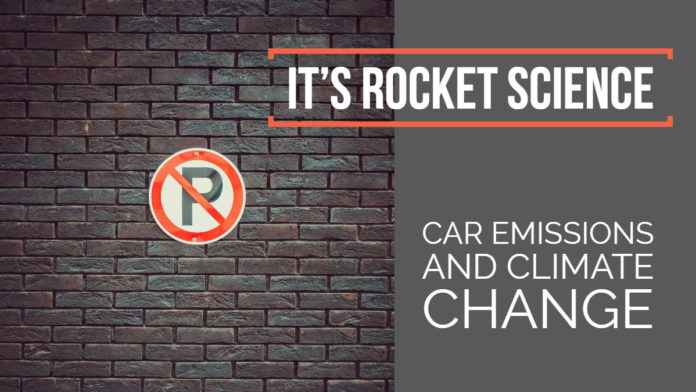As the competitive nature of parking at SRU intensifies with each semester, local commuters have been conditioned to cruise onto campus at least half an hour before class starts. Eager to snag a spot within reasonable walking distance, students fire up their engines and compete for a parking space in the chaotic commuter lots every morning. While we indignantly trudge up to the quad from a parking space that feels galaxies away, we shake our fists at the sky and demand administrators devise a parking solution. Although shouting criticisms into the Twitter void may feel like a sure-fire strategy for resolving the parking paucity, it’s possible that we can mediate this issue on our own— for our benefit as well as the environment’s.
It isn’t breaking news that car emissions negatively impact our environment. As cars utilize gasoline, a derivative of the fossil fuel petroleum, the vehicle is propelled by a mechanism that generates pernicious byproducts, polluting the air and damaging the atmosphere. These byproducts, or greenhouse gases like carbon monoxide and nitrous oxide, eventually accumulate to a degree that impedes reflected sunlight from leaving the atmosphere. When this occurs, the trapped energy gradually inflates the earth’s temperature (i.e. global warming), a phenomenon that exacerbates climate change. While most national policies have been instituted to force car manufacturers to design fuel-efficient engines, this only temporarily resolves a minor component of the issue. A car’s engine becomes less and less efficient with each mile, resulting in the aggregation of greenhouse gas and, ultimately, climate change. However, limiting travel by car may promote multifaceted benefits that reduce environmental damage and improve physical health.
The discussion surrounding car emissions and how they contribute to climate change has been a focal point of environmental research for decades, but the connection between decreased air pollution and increased physical activity is not often drawn. With steadily climbing obesity levels, the incorporation of physical activity into the American lifestyle has never been more crucial. Not only that but heart disease, a condition which has shown to be mitigated through exercise, remains the leading cause of death in the United States. As college students, it is especially challenging to budget time for exercise, but replacing a routine task with physical activity may be more manageable. Based on the location of most off-campus housing complexes, a typical walking commute would be approximately three miles round-trip. If walking at an average pace (and without factoring in the inescapable campus-wide incline), a student could burn around an additional 300 calories every day. That can be extrapolated out to an extra 1500 calories per week, and that’s just a conservative estimate. By electing to walk to school rather than drive in the rat race, students could assuage the parking panic, spare the environment, and take steps toward improving their physical health.








